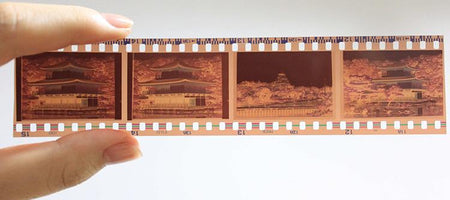Lantern slides made their appearance in 1850, ten years after photography was born. This invention changed the way photography has been perceived and experienced to this day. Lantern slides are a transparent film that can be projected on any surface. This way, a unique moment captured in a photograph can be shared with a small or large audience. Indeed, the creation of lantern slides represented a lot of fun and started a new sort of entertainment while also promising a more visual education for generations to come.
History of Magic Lanterns and Slides
In the 17th century, image projectors known as magic lanterns were used to project glass slides on various surfaces. However in 1850, William and Frederick Langenheim came up with an ingenious idea, called the Hyalotype. Their invention revolutionized photography in many ways; they created a special slide that contained a transparent positive image of a photograph. While, in the beginning, lantern slides were mostly black and white, they were soon slightly tinted to improve the image on the screen.
In 1916 a German company called Agfa invented color slides. Unfortunately, because the First World War was ravaging entire populations around the globe, the newest photography update didn’t leave the German territory until 1920. Soon after, lantern slides became popular among university professors who used them as a means of illustration.
The Kodachrome Three-Color Process
In 1936, the familiar 35mm slides were produced thanks to the discovery of Kodachrome's three-color process. Before Kodachrome appeared on the marketplace, color slides were produced using additive methods and through the reversal of the Autochrome Lumière process. The problem encountered with this method was that it often required a brighter light to obtain a clear image projection. The Kodachrome process, on the other hand, didn't present such inconveniences and had a lot of advantages. Contrary to substantive films, the new slides ensured that less light was lost upon exposure making the image sharper and the colors more lively. It also brought more saturation to the projected images.
Along with the improvement of slides, the magic lantern was replaced by the early electric slide projectors. In 1939, Kodak launched the Kodaslide Projector Model, which promised more stability and light than the magic lantern did. Since then, things have not changed much. The introduction of digital photography has led to the lack of meaningful improvements to slide technology for more than seventy years.
While the 35mm slide has provided us with an exceptional quality of photographs and unforgettable experiences, they are becoming rare and less compatible with our modern-day equipment. Nonetheless, this doesn’t mean that it is time to throw them away; far from it! At Southtree, we can help you immortalize your photographic slides so you can relive your favorite memories whenever you want. Using our state-of-the-art technology, we can give another life to your slides!













